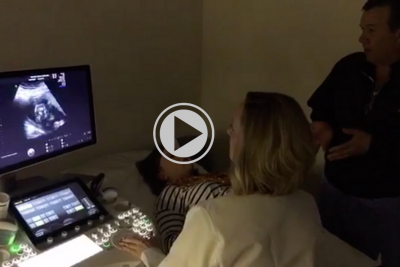 October 19-25, 2014 is the National Teen Driver Safety Week. Getting a driver’s license or even a permit and getting behind the wheel is an exciting phase for most teenagers. However, parents are frantic during this stage and age rapidly in the first few years after their kids start driving! The startling statistics related to teenagers and driving does not help the worried parents, either.
October 19-25, 2014 is the National Teen Driver Safety Week. Getting a driver’s license or even a permit and getting behind the wheel is an exciting phase for most teenagers. However, parents are frantic during this stage and age rapidly in the first few years after their kids start driving! The startling statistics related to teenagers and driving does not help the worried parents, either.
Motor vehicle crashes are the leading cause of death for 14-18 year olds in the U.S. In fact, almost half of teen drivers involved in a crash die. When our kids are younger, we take measures to keep them safe by vaccinating them, child-proofing our homes, teaching them safety issues like stranger-danger, talking to them about drugs and alcohol, etc. Yet, a recent survey shows that only 25 percent of parents have had a serious talk with their kids about the key components of driving. You can teach them practical tips about safe driving, and you may just help save their lives. In 2011, about 2,650 teens in the United States ages 16 to 19 were killed, and almost 292,000 were treated in emergency departments for injuries suffered in motor-vehicle crashes.That means that seven teens ages 16 to 19 died every day from motor vehicle injuries.
What puts the teen driver at an increased risk of driving accidents? Biologically, research has found that the prefrontal cortex of the brain, the region responsible for weighing the consequences of risky behavior is the last part of the brain to develop. This immaturity and lack of driving experience are the two main factors leading to the high crash rates among teens. In fact, young drivers’ crash risk does not significantly begin decreasing until age 25. Teens also tend to engage in risky behavior while driving, such as eating, talking on their cell phones, text messaging, talking to friends in the car, and they often do not wear their seatbelts. Fifty-six percent of teens said they talk on the phone while driving. Compared with other age groups, teens have the lowest rate of seat belt use. In 2013, only 55 percent of high school students reported they always wear seat belts when riding with someone else. Three high risk categories in teen driving are males, teens driving with teen passengers, and newly licensed teens! In 2012, 23 percent of drivers aged 15 to 20 involved in fatal motor vehicle crashes were drinking, and 71percent of drivers aged 15 to 20 were killed in motor vehicle crashes after drinking and driving were not wearing a seat belt. Most fatal nighttime crashes involving teen drivers happen between 9 p.m. and midnight, especially during weekends.
So, how can you help as parents?
- Pick a safe car- Choose a car that is easy to drive and would offer protection in the event of a crash. Avoid small cars and those that might encourage speed and recklessness. Trucks and sport utility vehicles should also be avoided, since they are more prone to rollovers.
- Enroll your teen in a driver’s education course- The more driving practice the better; these courses instill confidence in your teen, and are designed to cover aspects of different challenging situations on the road.
- Enroll your teen in a safe driver program- Check whether your insurance company offers a “safe driver” program. Teen participants in these programs sign parent-teen driving contracts that outline the young driver’s responsibilities, like not having teen passengers in the car, being home by a certain hour, etc., and the consequences of failure to meet those expectations. Also, if your teenager completes the program, you may be eligible for a discount. Many insurance companies are helping to reduce the number of accidents involving teen drivers by subsidizing the cost of electronic devices, such as GPS and video cameras, which can monitor the way teens drive and alert parents of unsafe driving practices by email, text message or phone.
- Discuss the dangers of drug and alcohol use- Advise teens never to drink or do drugs, and not to get in a car if the driver has used drugs or alcohol. Encourage your teen to call you if such a situation arises to ensure they have an alternate safe way home.
- Understand the dangers of distracted and impaired driving- Talk to your teen about the importance of never phoning or texting while driving, and keeping distractions, such as the radio and chatting with friends to a minimum. Teens should also be responsible passengers when in a friend’s cars. New drivers should wait 1,000 miles or six months before their first teen passenger.
- Be a good role model- New drivers learn by example! If you drive recklessly, your teenage driver may imitate you. Always wear YOUR seatbelt and never drink and drive.
- Enroll Your teen in a graduated driver’s license program- Many states have been successful in reducing teen accidents by enacting graduated driver’s license (GDL) legislation. These laws, which include a three-phase program, allow teen drivers to develop more mature driving attitudes and gain experience behind the wheel. New drivers are restricted from certain activities, such as late-night driving or having passengers in the car, until they have had their licenses for a set period.
- Help your teen pack an emergency kit- Include first aid items like reflective traffic warning triangles to warn other drivers in the event of a breakdown.
Parents should take an active role in their teenagers’ driving practice and expose them to driving in a wide variety of driving conditions. Make sure they have driven in inclement weather conditions to build experience and confidence. Even the best teenage drivers do not have the judgment that comes from experience. The key to granting driving privileges is to break the restrictions into parts and ease the teen into them one at a time. Research indicates that an agreement between parents and teens to set rules and establish consequences is one of the most effective tools to keep new drivers safe. My 15-year-old is planning on taking her driver’s permit test in a couple of weeks. I’m not quite sure that I’ll be truly celebrating when she passes that test!





Thanks for the tips! I could use some help teaching my child to drive before he gets his license. Enrolling my son in a safe driver program seems like a great way to supplement what he’s learning in driver’s education. He could use some classes that teaches him more about his responsibility as a driver, so enrolling him in a safe driver program on top of his driver’s ed courses would be a good idea.
I agree that it is essential to emphasize safety for teen drivers. My son just got his learner’s permit and I want to make sure that he becomes a defensive driver. I’m going to enroll him in driving lessons, but I’m not sure how to find the right one. Do you have any suggestions for lessons that emphasize safety?